7 Dividend Aristocrats Sporting the Highest Yields
History proves there is no better way to create generational wealth than buying dividend stocks — especially the Dividend Aristocrats. There has not been a single decade over the last 93 years where dividend-paying stocks on the S&P 500 did not outperform non-dividend stocks.
More recently, JPMorgan Chase found stocks that initiated and then raised their payouts over the 40-year period between 1972 and 2012 returned an average of 9.5% annually, versus just 1.6% non-dividend-paying stocks.
That’s why you should buy Dividend Aristocrats. These are stocks that are part of the S&P 500 that have raised their dividends every single year for at least 25 years. It’s a surprisingly select group of companies. Only 67 stocks make the cut. Simply chasing yield is a dangerous pursuit since a higher yield often entails higher risk. So, ideally, you want to balance the yield with risk. Fortunately, Dividend Aristocrats tend to do that, even if it’s not a foolproof strategy.
InvestorPlace - Stock Market News, Stock Advice & Trading Tips
For example, AT&T was booted from the list last year after cutting its payout in half following the spinoff of its Warner Media business. The deal, though, actually strengthened the telecom’s remaining dividend payment and may give AT&T a chance to grow again.
So let’s look at each of these high-yielding Dividend Aristocrats.
Dividend Aristocrats: International Business Machines (IBM)
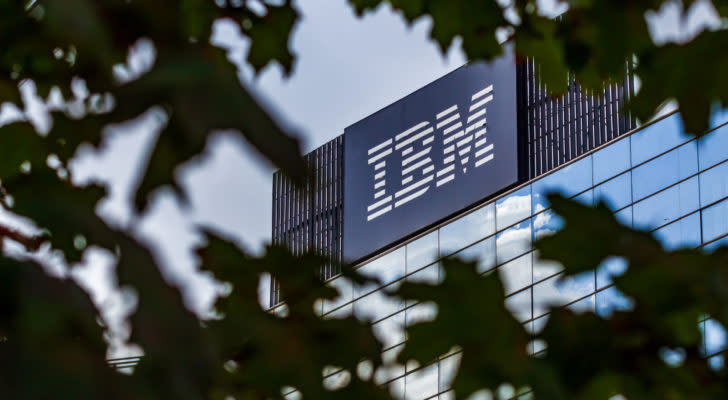
Source: shutterstock.com/LCV
IBM (NYSE:IBM) is a highly profitable business that essentially created the information technology industry. Yet it has been too late to recognize today’s leading tech trends. For example, it missed the transition to cloud computing and scrambled to become a hybrid cloud company offering both physical and cloud-based solutions. There’s potential in the field, but IBM is not the leader.
In fact, a lot of IBM’s offerings reek of a “me too” strategy. It gloms onto whatever is popular at the moment without putting any distinctive IBM imprimatur on it. But its operations do throw off a lot of cash. Trailing 12-month free cash flow stands at $10.3 billion. While that’s less than a few years ago, it’s more than in 2022, and it handily supports its dividend that yields 4.5% annually. IBM has increased its dividend for 30 straight years.
Franklin Resources (BEN)

Source: Dmitry Lobanov/Shutterstock.com
Best known as the owner of Franklin Templeton, one of the world’s largest investment managers with $1.4 trillion in assets under management (AUM), Franklin Resources (NYSE:BEN) is benefiting from an improving market. AUM increased in the latest period while outflows stabilized and remained flat.
The asset manager suffered from strong long-term net outflows earlier this year as consumer confidence in the economy wavered. Since much of Franklin’s revenue is dependent upon investment management fees, market volatility can work for the company as well as against it. A heady feeling amongst investors gets them to put money into the market, boosting AUM. Angst over the economy’s direction has them pulling money out. But bull markets always follow bears, and the long-term directory for this premiere asset manager is up.
Franklin Resources is seeking new lines of business to diversify. It recently acquired a retirement asset business; a credit and private debt manager; and additional real estate, private credit, and hedge fund lines. The firm has raised its dividend for 41 years and counting. The payout yields 4.6% annually.
Amcor (AMCR)
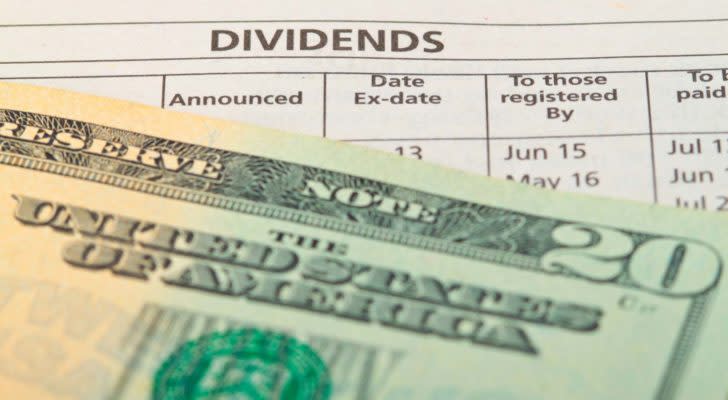
Source: Shutterstock
There’s a good chance you’ve never heard of Amcor (NYSE:AMCR). Involved in the packaging industry for food, beverages, pharmaceuticals, and personal care products, its business is suffering as a result of persistent high inflation and continued rising food costs. Consumers are not buying the same kinds of foods they were previously. Or, they’re cutting back, as pocketbooks are hit hard.
Amcor is being hit with high raw material costs as well. That led the packaging expert to raise prices where it could to offset the impact. It resulted in growing adjusted operating earnings for the year. The company has been through these business cycles before and weathered them just fine. Its dividend is stellar too. Amcor has raised its dividend for 40 consecutive years and yields 5.4%. Over the past three years, the payout has risen at an average rate of 27% annually.
Realty Income (O)

Source: Shutterstock
Real estate investment trust Realty Income (NYSE:O) is a unique Dividend Aristocrat in that it makes its payout monthly. In fact, it dubbed itself “The Monthly Dividend Company.” It’s not the only REIT to pay dividends every 30 days, but it’s done it the longest. Better, the REIT has now declared 638 consecutive monthly dividends and increased the payout 121 times. The dividend yields 5.6%.
It owns more than 13,100 real estate properties. The commercial tenants occupying its space do so under long-term net lease agreements. It also just agreed to buy Blackstone‘s 22% stake in the Bellagio casino in Las Vegas for $300 million. Realty Income will also contribute $650 million in preferred equity into the venture with Blackstone. Las Vegas is making a strong comeback and Realty Income’s investment should help it benefit from the new relationship.
3M (MMM)
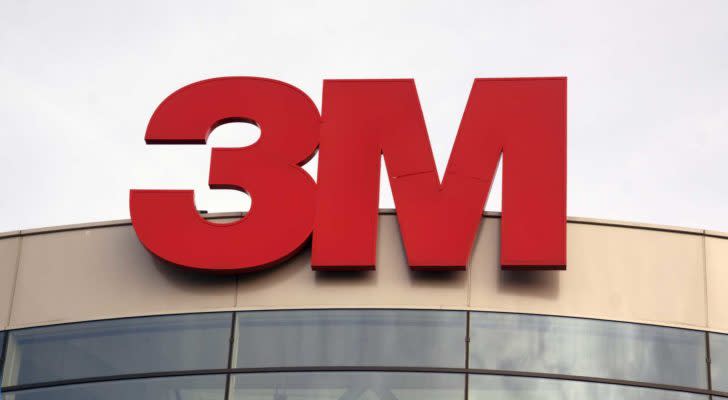
Source: JPstock / Shutterstock.com
Although 3M (NYSE:MMM) was well-known previously for products like Post-It Notes and Scotch brand tape, the industrial conglomerate really gained consumer mindshare during the pandemic. Everyone wanted one of its N95 masks for protection and they were in short supply.
With the situation normalized once more, 3M’s stock is now under pressure from potential legal liabilities related to contaminated drinking water and faulty earplugs for the military that were manufactured by a company it acquired. It agreed to pay out $10.3 billion for the so-called “forever chemicals” found in the water, and it has set aside up to $1 billion for claims on the earplugs. Some analysts, though, think that might not be nearly enough.
Despite the headwinds, 3M remains exceedingly profitable. Earnings in the second quarter took a hit because of the one-time charges related to the settlement, but it was still able to report adjusted profits of $2.17 per share. While that was down 12% year over year, it includes pre-tax restructuring charges of $0.31 per share.
3M also returned $828 million to shareholders through dividends. The conglomerate has raised its dividend for 66 years running. It yields 5.6% annually.
Leggett & Platt (LEG)
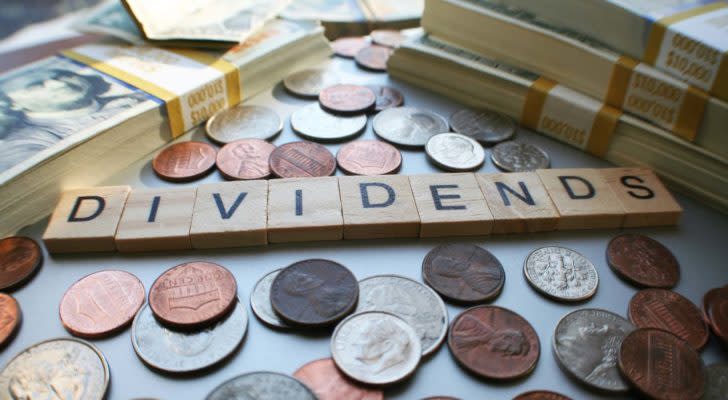
Source: Shutterstock
Like Amcor, many investors may not be familiar with Leggett & Platt (NYSE:LEG) even though they may use its products every day. It’s one of the leading manufacturers of innerspring coils for mattresses and sofas. Leggett & Platt also makes mechanical and lumbar support for car seats, steel mechanisms and motion hardware for chairs, and synthetic fabrics for ground stabilization, drainage protection, erosion, and weed control.
With the housing and auto industries in a weakened state, the diversified manufacturer took a hit to sales. Consumer demand for mattresses, furniture, and flooring were all much less than anticipated in the second quarter resulting in sales falling 8% from last year. It should be noted that last year’s earnings saw sales hit a record $1.33 billion for the period.
Leggett & Platt lowered full-year guidance because of volatility in the marketplace. It also said it did not have much visibility into how long these conditions will last. Housing doesn’t look like it will turn around anytime soon, but the auto industry is seeing some improvement. New car sales surged 15% higher in August compared to last year. Aerospace and hydraulic cylinder segments are also enjoying growth, but they comprise the two smallest businesses Leggett & Pratt operates.
However, investors are sustained by its dividend, which currently yields 6.9%. It’s paid a dividend every year since 1939 and raised it for 52 years straight (also making it a Dividend King).
Walgreens Boots Alliance (WBA)
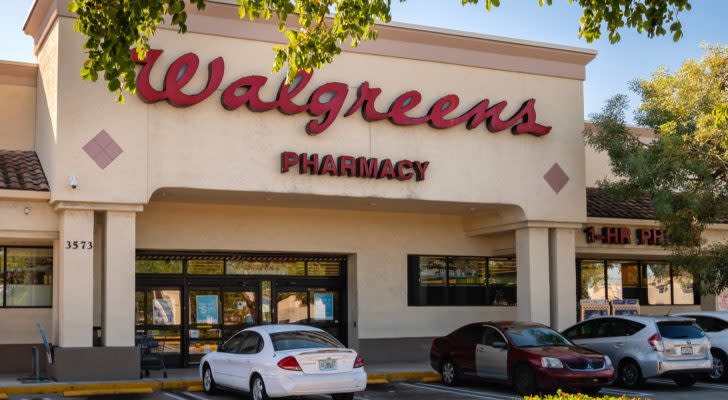
Source: saaton / Shutterstock.com
The Dividend Aristocrat with the highest dividend yield is Walgreens Boots Alliance (NASDAQ:WBA) at 8.7% as compared to the S&P 500’s 1.5% yield. But Walgreens did something notable this past July that it hasn’t done in the past 47 years: it didn’t raise the payout.
The company’s stated policy is “to increase its dividend each year.” It even points out it has made a payment every quarter since 1933. The inaction indicates the pharmacy chain is hurting. In fact, the CEO quit to kick off September.
Technically, Walgreens just needs to pay out more dividends per share from one year to the next to continue qualifying as a Dividend Aristocrat. That means there is still time to raise it. That it didn’t do so when it normally does is telling. As I said before, Dividend Aristocrats tend to keep raising their payouts, but not always.
Sales were up 9% in the fiscal third quarter and adjusted profits rose 3%. However, declining demand for Covid vaccines caused a 20% headwind. President Biden is requesting funding for a new and improved vaccine, but the public may not line up to take yet another booster shot. Officials, though, want people taking one at least every year.
To contain costs now, Walgreens is targeting $4.1 billion in annual cost savings by the end of fiscal 2024. It is also expanding its focus beyond its pharmacies, moving into primary, specialty, and urgent care. A bet now on Walgreens Boots Alliance is one that sees the pharmacy chain turning it around.
On the date of publication, Rich Duprey held a LONG position in T, BEN, AMCR, O, MMM, LEG, and WBA stock. The opinions expressed in this article are those of the writer, subject to the InvestorPlace.com Publishing Guidelines.
Rich Duprey has written about stocks and investing for the past 20 years. His articles have appeared on Nasdaq.com, The Motley Fool, and Yahoo! Finance, and he has been referenced by U.S. and international publications, including MarketWatch, Financial Times, Forbes, Fast Company, USA Today, Milwaukee Journal Sentinel, Cheddar News, The Boston Globe, L’Express, and numerous other news outlets.
More From InvestorPlace
ChatGPT IPO Could Shock the World, Make This Move Before the Announcement
Musk’s “Project Omega” May Be Set to Mint New Millionaires. Here’s How to Get In.
The Rich Use This Income Secret (NOT Dividends) Far More Than Regular Investors
The post 7 Dividend Aristocrats Sporting the Highest Yields appeared first on InvestorPlace.
